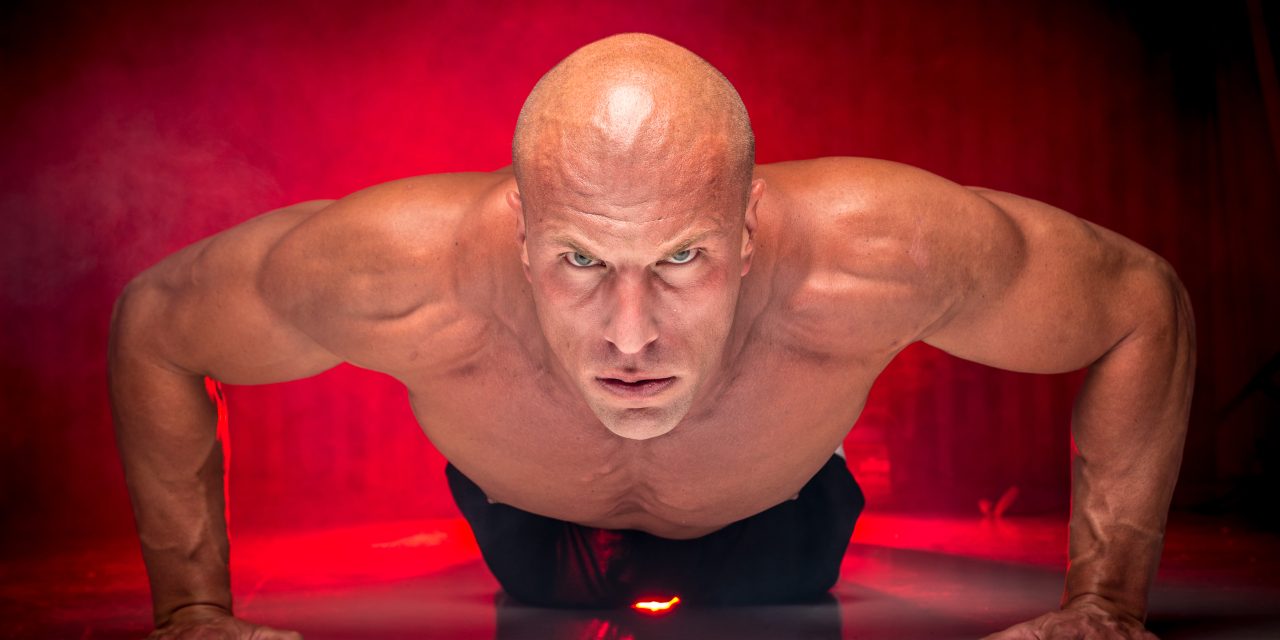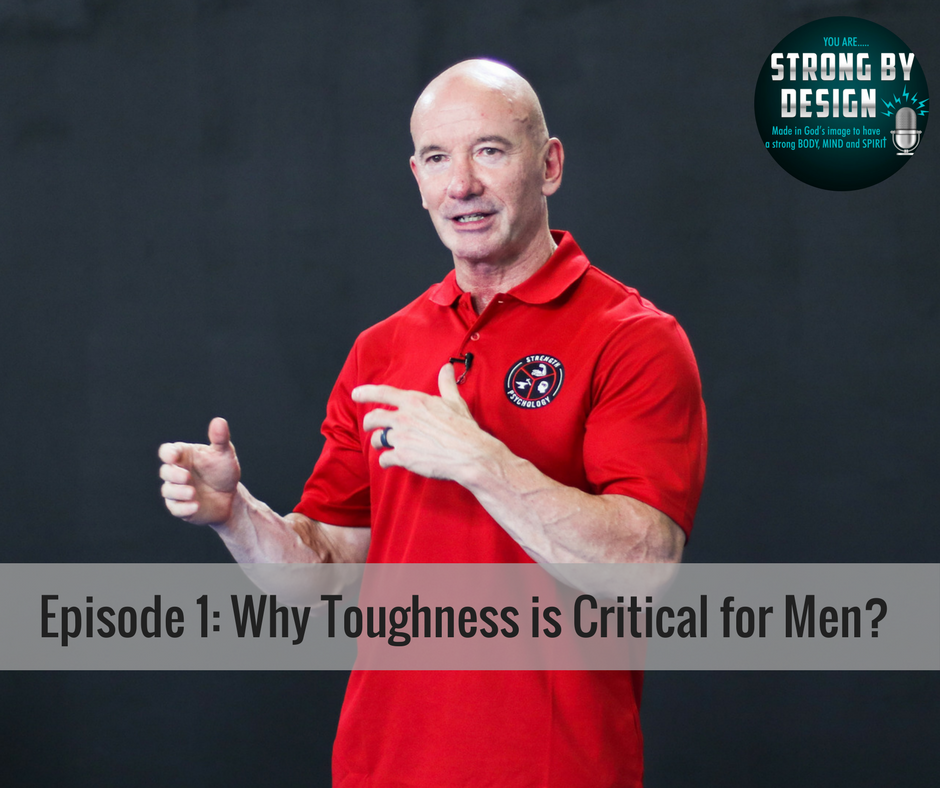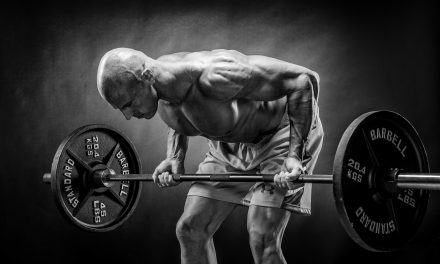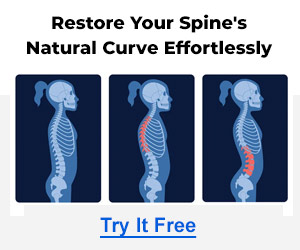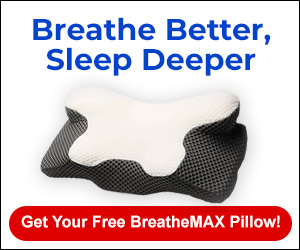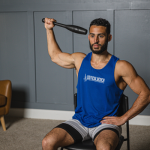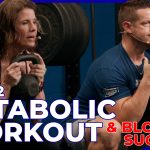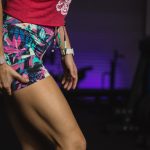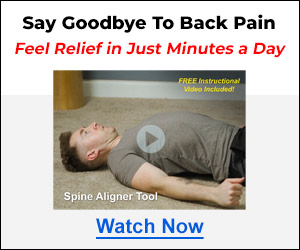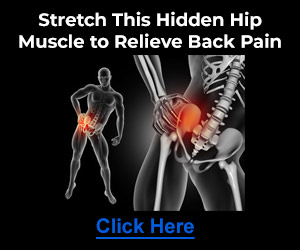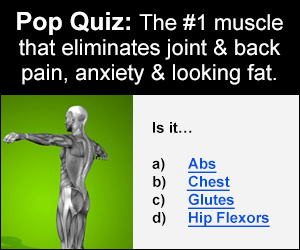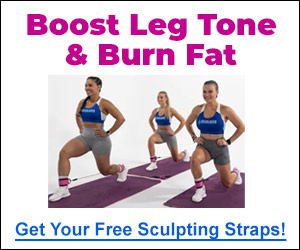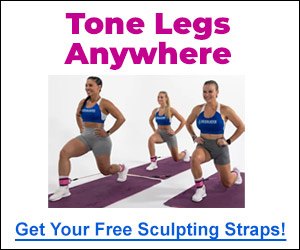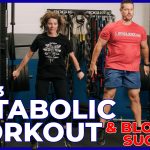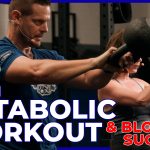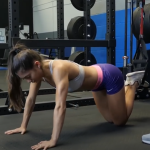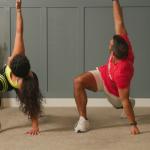This is part 2 of “Your Body’s Hidden Hunger Hormone”. Coach Chris and Ryan Faehnle continue their conversation about fat loss. On this episode, they discuss the issues that many people are experiencing from sitting too much. Also, Ryan details a pec injury and shares what he has learned through his physical therapy on how to activate stubborn body parts.
Want the free Core Killers report? Go here! Or text “Core” to 345345
“If you have trouble activating a certain muscle it is possible that you have fat stored in that area.”
-Ryan Faehnle

Time Stamps:
1:48 Ryan details his pec injury
5:00 Tricks for people who sit a lot
9:00 Dealing with back pain
10:00 The issue with sitting a lot
11:15 Tricks for dealing with stubborn body parts
16:05 Weight training is the best way to lose fat
Connect with Ryan Faehnle:
Connect with Critical Bench:
Transcript
Chris: [00:00:00] Your body’s hidden hunger hormone that can make fat loss nearly impossible. Coach Chris Wilson interviewed strength coach Ryan Faehnle. Shifting gears a little bit. We all know that obviously diet as we’ve been talking about is critical to getting results to fat lost to looking better or feeling better but exercise obviously is a huge component as well. It’s a huge part of it. But the time required as well as a life that build any war in this modern tech and technology based world it’s fitting as I’m sitting talking to you right now and sitting on a computer for a living. So it’s hard to undo all that sitting. Even if I go out and I work hard an hour a day.
Ryan: [00:00:49] No doubt.
Chris: [00:00:52] Share with us some of your unique experience and background in therapy. Physical therapy to activate and wake up the muscles faster.
Ryan: [00:01:02] OK. So first of all you have to understand I have done a lot of dumb things in my life. OK, that’s rule number one. I am a risk taker. The fastest way to get me to do something is to say “I bet you can’t…”, and then I’ll do that. So I did some stupid stuff many years ago. I ended up with a completely Ruptured Pec Major. It literally rolled up. Completely rolled up on my sternum. That was a lot of fun. And so I had surgery, basically the surgeon had drilled a cross inside of the head of the humerus or the arm bone, shoulder bone and literally put his hands in their. Weave the course of the tendon. Pulled the tendon out the back side tied the knot. And then the bone eventually grew back over it. But it was it. I saw I have a huge scar that shrunk a little bit. But it was like an eight inch scar up the front of my arm. And so, I had this Pec injury surgery went to rehab. And for a period of about six months I couldn’t pick my arm up like I couldn’t lift it up and it wasn’t. It had nothing to do with like the pec itself but it was the muscles of the shoulder like I literally just couldn’t pick it up. And they did some diagnostic testing and found that I had an inhibited serratus anterior muscle. Which you might not know unless you were in physical therapy, but it’s an important stabilizer or the shoulder. And if it’s not working, you can’t lift your arm up. So once they found that I started doing physical therapy exercise specifically for that muscle. And what’s amazing is it resolved itself really quickly but I started to learn. I was like Man, I’ve never felt this muscle contract this hard in my life. And I started to think you know what, what if we applied these drills to in a more bodybuilding context. So more muscle building context rather than therapy. You know everyone has if you look on your body and pick out what your best body part is. You think it’s the most well-developed. I’m going to bet you that you can contract it very easily without much effort. You can make it cramp and you can really feel the contraction. Would you say that’s accurate for you, Chris?
Chris: [00:03:15] Of course, absolutely.
Ryan: [00:03:18] OK. Now take the body part that you have. That you feel is the least developed or the most underdeveloped that you struggle to build. It’s a little harder to contract right. Like you can’t really feel it squeeze. Would you say that’s accurate to for you?
Chris: [00:03:34] The connection that you have to it. It’s like the awareness isn’t there.
Ryan: [00:03:39] Right. Right. And so what that is, that is your brain that is not. Has the inability to send the signal to that muscle. So you can keep pounding away, like bench press for example. A lot of people Bench Press to develop their pecs. But if your brain has trouble activating your pecs, your triceps and shoulders are just going to take over and you can bench press all you want. The pecs will not be optimally stimulated and they won’t be optimally developed. So we all have s tubborn body part that we struggle to develop. So this is related to muscular innervation with the ability of the brain to send the signals through the nerves into the muscle. Well in physical therapy they use these activation exercises to improve when people are injured. I started using them for people like you’ve said who’ve been sitting all day. They have poor posture or maybe there’s just a muscle that’s really not developed well. We started incorporating those. It’s a simple concept in theory but you really have to know your anatomy to get it right. Pretty simple, you basically take the muscle to its most shortened position and doing isometric contraction with very very very light with no weight whatsoever. And do ten repetitions with a ten second hold asymmetrical on each repetition. Now where a lot of people screw this up as they try to go hard on it and they try to really like turn it into a workout and they end up turning on all synergistic and stabilizing muscles surrounding the muscle and trying to work. It just start off as a very gentle contraction until you learn to turn it on the target muscle on and only to target muscle and then you can further work on squeezing it harder. It can be done daily. It can be done multiple times daily which I will tend to do for people if I’m a bodybuilder. And the judges have told a man your, you know your pecs are lagging. I will have him do pec activation exercises. Two to three times daily and then again before his pec workouts in order to improve that. So basically that wakes up the brain, improves the innervation or the nerve bundle into the muscle and it may some contract. So now that you’ve turned the muscle on it was like a light switch. You turn the muscle on then you go to do your hard work out. And now the muscle is working as it is supposed to. So in the bench press example, you activate your pecs beforehand then you go to your bench press and now you are creating a stimulus to build a bigger chest. So that’s kind of where I started with this activation stuff and it’s really proved to be proven to be very effective for people not only returning from injury but also just in developing certain body parts. Yeah, that’s pretty cool.
Chris: [00:06:22] That awesome and I can’t help but think as you’re talking about that you know. You know we’re using obviously a bodybuilder as an example. It could be for anybody. Just think this that the posing element.
Ryan: [00:06:36] Yes.
Ryan: [00:06:37] Where you’re trying to obviously, you’re trying to show your body to a panel of judges and to an audience and you’re trying to show them. Look, look at my body and look at my muscles. Look what they can do. And so the connection that they have and all the effort and time spent in these positions and posing and contracting the muscles. They have probably at the top of the heap when it comes to that mind muscle connection. Right. Just because no one knows that amount of hours in front of a mirror you know just tweaking and positioning themselves in these ways. But their muscles are all live. You know they have an intimate understanding of how to fire everything and if regular people had some of that. You know that it’s not that people want to look like Arnold Schwarzenegger any day soon but if they had his ability to pose in front of a mirror, that they would they would make these muscles wake up.
Ryan: [00:07:45] Yeah. And there’s other implications too especially for the population today. A lot of it is pain. Back pain is one of the most debilitating. I say quote unquote injuries can oftentimes there’s no actual isolatable injury, a lot of times it was just “Oh man my back started killing me”. All a lot of times it’s inactive glutes. It’s inactive transverse abdominal muscle in the abdomen. Inactive internal obliques that stabilizes spine. I’ve had people, I had a guy a firefighter ironically recently. He wasn’t a client of mine just a friend and I saw him like hobbling into the gym one day like looking awful. And he had told me that is the first time he had gotten up in the past week. He’s been completely down. This guy has five kids. Five children and so he didn’t have a I mean, he was laid up in bed. Wife is taking care of all the kids and couldn’t work. And he said I did something to my back you know. Tweak my back and I said OK. Come over here and I gave him a couple breathing drills, some abdominal activation work and he stood up and he’s like oh man this is good I told him to do it a couple of times a day. And here like yesterday. So this was probably a week ago and then yesterday he was in the gym doing front squats, throwing a metal medicine ball violently against the wall, jumps all kinds of stuff. So a lot of times it’s really that simple. It’s just turning stuff up on. Like a light.
Chris: [00:09:12] It hit something. It’s because a lot of us without even realizing it. We just elected. Even if for people that work out, that we go for a run where you know we go to the gym three times a week and then we spend so much of our time in this half fetal position. This seated position and we’re just our muscles our bodies just turned off. You know we’re not standing up on our feet moving around like people. Not that long ago if you go back a hundred years or more people just weren’t sitting so darn much. And it’s this culture that you know that’s obviously kind of a global thing where is just we all kind of been conditioned to be in this seated position. It’s really hurt our physical health. You know I obviously. So that it’s great to get that kind of insight. And I thank you for sharing some of that and obviously went through you know that pec injury. You have a really good understanding of how all of that work.
Ryan: [00:10:21] Yes. It was hilarious. I mean it was kind of funny at that time because my co-workers. I was a strength coach at the time. The university they would mess with me. They would put something up on a shelf. Hey Ryan, can you get that, I’m like “shut up!”. Like I couldn’t even lift my arm you know. But got that sorted right away. One of thing that I want to talk about real quick Chris with the proper activation. And this is controversial. I’m going to go ahead admit it. It’s controversial and the impact is going to be small but for some people a small impact is necessary to get results. A lot of times our stubborn body parts quote unquote stubborn body parts aren’t just weak. They may maybe just covered with body fat. We all have fat deposits at different areas. We all have a quote unquote last place that body fat ones that come off of. When you contract the muscle it gives off heat. This heat causes fat deposits from around that muscle to be released into the bloodstream. This is called lipolysis. Now, if you have trouble activating certain muscle it is possible that you are going to have fat stores in that area. OK. So one of the things that I do with stubborn body parts where people are carrying excess body part is I will have them do activation drills. Then a workout for that body part. And then I have some specific cardio protocols that I’ll have them do after. So the activation and the weight training helps release the fat from the area. Then the cardio works helps to burn the fat from that area. If that makes sense. And again it’s a minor. It’s you’re not going to go from looking like an elephant to a Victoria’s Secret model overnight. Right. But I have seen it make some measurable changes in skin folds when doing this protocol. So.
Chris: [00:12:13] Well it obviously makes sense to me. And you can’t help but think of the whole spot reducing theory you know where people you know. If I just do more crunches, more sit up. I’ll all have this great six pack over time right now. No, not quite that kind of stink anyway for your abs. But that’s a whole another conversation. We can open that out and how wide open. Yeah. But I understand obviously the theory behind it right. You know if you’re dealing with fat more back fat or something at that and say as a man but you aren’t spending maybe a good amount of time doing pull ups and doing some of the exercises that would have the greatest impact on some of the biggest muscles in your back then. But then all of a sudden you say, hey I’m going to commit to X amount of pull ups per week for over 30 60 90 days and I have a hard time believing that you wouldn’t notice a shift in how your body looks. How it developed. How it feels firmer in that area because you know you’ve dedicated a certain amount of time to you know to do that and then like you said you mentioned the science behind it, lipolysis. You know all of a sudden it’s like OK then in essence it almost does work. It’s just, it’s maybe there’s so much more that goes into it too because of it.
Ryan: [00:13:45] Oh no doubt. It’s not a magic bullet. It’s not a magic bullet thing. It’s not going to create miracles but I definitely do with the protocols. I have some supplement protocols that assist with the lipolysis. And then the cardio portion is kind of important too. And we talked a little bit and brief about how a steady state aerobic exercise increases Ghrelin levels. I’m not completely anti-cardio but it’s just not the first thing that should be done. So a lot of people do when they lift weights. So the fat is released from that area. But then if they don’t burn it, it just gets deposited elsewhere in the body or right back where it came from. So that is why I do utilize the post workout energy systems development work for the fat loss in that area.
Chris: [00:14:39] I just had never, had never I can’t say I’ve never but most often and I just don’t see someone with you know an ideal physique who only does cardiovascular training.
Ryan: [00:14:52] I agree.
Chris: [00:14:53] Only does running, only does you know biking. There needs to be another side of it. There needs to be another component.
Ryan: [00:15:01] If you think about, weights are truly King when it comes to a better body. So if we talk about you know of a lot of people that have excess body fat will say I just have a slow metabolism. My metabolism is sluggish. Your basal metabolic rate or BMR determines 60 to 75 percent of your daily calorie burn. That’s how much calories you burn just sitting on your butt. That doesn’t account for exercise.
Chris: [00:15:30] Your organs functioning and everything else.
Ryan: [00:15:33] Right. That’s just keeping you alive. Exercise is a very small percentage. Believe it or not of your daily calorie burn. So what increases BMR? Weight training boost BMR. When you increase your BMR you literally burn fat when you’re sleeping. You hear you know a lot of like get rich quick scheme. Talk about earn money even while you’re sleeping well and you boost your BMR, you burn fat even while you’re sleeping. So that’s why weight training should be the top priority. So I look at it as a hierarchy. If you only have let’s say 45 minutes a week to train. I would do three 15 minute weight training sessions. If you have a little more time than that I would probably add in some high intensity interval type cardio. And then still if you have more time after that, then you can start adding in more steady state aerobic type cardio. And that’s kind of the order I start introducing these things for people because you have to go with the biggest bang for your buck which comes changing your body composition is weight training.

